How to Ensure Your Vendor-Purchased Safety Integrity Level Packages Are Compliant
If you purchase prebuilt (Automotive) Safety Integrity Level – ISO 26262/IEC 61508 or other – packages, what kind of guarantees do you need from the...
Unlock Engineering Insights: Explore Our Technical Articles Now!
Discover a Wealth of Knowledge – Browse Our eBooks, Whitepapers, and More!
Stay Informed and Inspired – View Our Webinars and Videos Today!
Exploring the future of software-defined vehicles through expert insights.
6 min read
 Daniel Stuart
:
Nov 6, 2020 3:27:49 PM
Daniel Stuart
:
Nov 6, 2020 3:27:49 PM

Well, it is all rooted in the long game. That may not be the answer you were hoping to hear but read on.
For any company with a stake in electrical/electronic (E/E) system or component supply, the long game becomes not only a safe product for the automotive space, but also a much higher likelihood to avoid the negative headline news stories and the inevitable courtroom. Automotive Functional Safety, or ISO 26262, can be a major contributor to gain such benefits, providing your company a directional pathway towards said end goals. And like any well-formed and executed process, the returns will come.
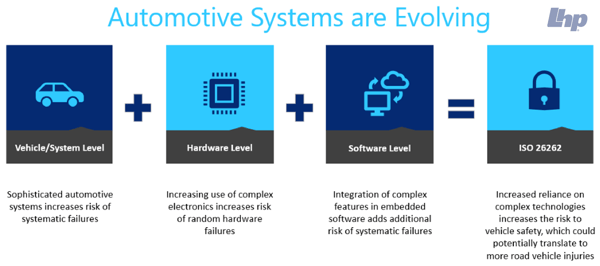
Figure 1: Automotive Complexity Levels Increasing
Now, let’s dig deeper as to what these financial “savings” actually are. There are two, in the form of 1.) cost avoidance, due to part failure and the resultant litigation costs; and 2.) a process-oriented, well-trained workforce.
1. Litigation
2. Well-Defined Process
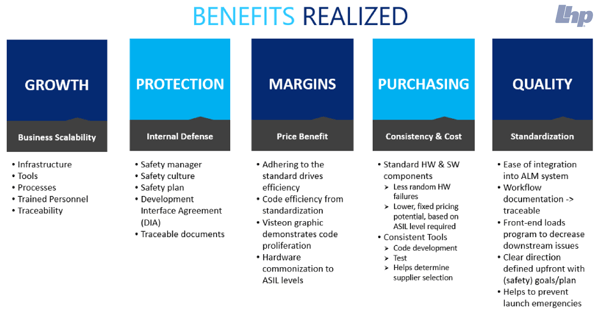
Figure 2: ISO 26262 Benefits
While litigation is perceived as a cost avoidance, if you ask an affected company, such as any OEM or large Tier 1 who faced this, they may have a different opinion. There is always a choice, and your company may decide to gamble. However, the consequences will be real, once an ‘event’ occurs. Hindsight is always 20/20. The civil costs will be a given, but criminal costs may become a reality.
You may be saying, “Alright, you have my attention, so what’s the deal?” Starting from the ‘event’ itself, the plaintiff’s lawyer will likely get the event into the news – a smear campaign – beginning the irreparable damage and establishing an emotional factor in plaintiff’s favor. Once created, the goal is to build a case of negligence – or at least an impression of it – in the courtroom. Naturally, the target will be the companies that have the deepest pockets, likely the OEMs.
The OEMs will naturally pull in all supplier tier levels involved, to share the cost. It is important for your company to have a Development Interface Agreement (DIA) in place ahead of product development activities. The DIA is a beneficial component for which ISO 26262 defines. So, fully adopting the ISO 26262 standard in its entirety will be crucial for your company and should be starting to make sense at this point.
Although, if not yet convinced, there are case studies abound. All company names are removed since not truly relevant. The important aspects are the lessons learned and the financial burden associated with the ‘event.’ The reality is, any company associated with an automotive E/E system or component has the potential for this type of ‘event’ if means are not taken to mitigate it.
Take an unintended acceleration ‘event’ for example. The actual root cause is muddied, since the plaintiff’s counsel was able to establish multiple faults, both mechanical and electrical. The true root cause seems to be moot, since a product liability lawsuit shifts ‘the burden of proof for acting with due care’ to the manufacturer. In other words, the manufacturer is on the hook to prove its innocence.
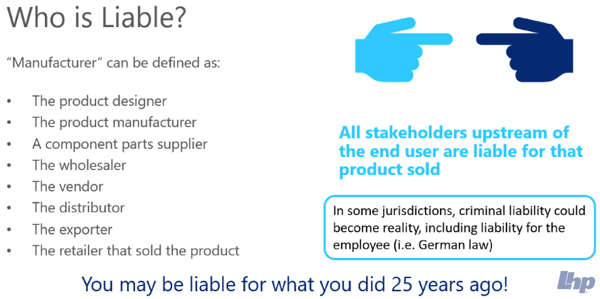
Figure 3: Manufacturers Becomes A Broad Definition
For the company involved in the example, the total financial burden is unknown since there were close to 500 personal injury and wrongful death lawsuits, all settled out of court. However, the known financial implications totaled approximately $2.3 billion, of which $1.2 billion were fines from the U.S. Justice Department from its criminal investigation.
Yes, you read that correctly, criminal investigation. Fortunately for them, if they abided by the agreement, the U.S. government would dismiss the charge. Now that criminal actions have been established, the precedent is set for future litigation. Criminal and civil action will likely be a part of the bundle for the plaintiff’s legal counsel.
To make matters worse, collateral damage can also occur to OEMs and suppliers alike, when a far-reaching technology, like airbags, spans across multiple OEMs and vehicle models. In this instance, the supplier is clearly at fault. However, the supplier cannot absorb the costs, so files for bankruptcy. The vehicle OEMs are “stuck with the bill,” to the effect of at least $11 billion. The result, a huge cost is incurred, plus a supplier no longer exists in the auto industry.
It is easy to paint a grim picture for how these matters played out. However, the automotive industry is relentless in both cost and timing pressures. Many companies take shortcuts to achieve production. This is nothing new, which clearly indicates the need for a standard like ISO 26262. The safety aspect, as defined in the standard, even requires independence from said cost and timing pressures.
While the U.S. government has not yet mandated the standard, the OEMs realize the necessity to protect both themselves and the public. You can see why. $11 billion for one, yes, ONE ‘event’ is difficult to swallow. The OEMs are positioning themselves to require ISO 26262 as part of the development cycle, but currently, in varying degrees. Although, there will be market consistency, once complete adoption occurs.
While no one wants to absorb the cost examples mentioned, the cost per unit vehicle does not compare to a potential indicator for the next generation of vehicle technology: full autonomy. As the industry moves closer to levels 4 and 5, truly hands-off technology, the amplitude for litigation costs could increase exponentially. For the unintended acceleration ‘event,’ the failure cost per unit is $605.26, given the known data. Likewise, the airbag ‘event’ is $120 per unit.
Now, consider another incident involving an autonomous vehicle on a public street. There were very few vehicles in-field, unlike the incidents mentioned. The family sued a municipality and the company responsible for the autonomous vehicle. The lawsuit for the municipality is known to be at $10 million. If awarded, the cost per unit vehicle is $40,000, a full 65 times over the other examples. The costs could be greater, since the responsible company settled out of court.
While moving to autonomy does not guarantee a multiplier to that of the prior example, it is an indicator and does highlight litigation is ready to seek as much punitive damage they can.
To begin to answer “Yes” to these questions, you must be able to provide evidence that the following are in place: well-defined processes in place AND USED, plus the resultant documentation must be complete, comprehensible, consistent, and unambiguous.
There are so many reasons to create a well-defined process using ISO 26262 as the capstone. Besides the examples provided, such as a litigious culture and OEM requirements, there is a backend benefit, i.e., savings, by having your company backed by a process-oriented culture, along with a well-trained workforce proficiently using the process. In fact, the reality virtually mandates a stable process for today’s development cycle, since today’s vehicles have over 100 million lines of code.

Figure 4: Source Code Proliferation (m = millions)
If you are reading this, your company is likely a part of that code proliferation. Then what is the solution to develop E/E products and have peace of mind these products going to market are safe? The first step is to create the process. While you can create this on your own, ISO 26262 can be the guide to build that structure. The best approach would be to have a certified ISO 26262 process. LHP can help.
This effort can award your organization with consistent product development across all your company’s product offerings. It can propel you to the front of your markets and establish credibility with your customers. Furthermore, utilizing a certified process can pay big dividends in other ways, opening up new potential markets and increasing sales of existing ones.
The second step is to develop your workforce. A well-defined process provides no value if your personnel cannot effectively use it. The below graphic says it all. In addition, ISO 26262 identifies personnel competency as a requirement in Part 2. More on that later. So, train, train, and train. Again, LHP can help.
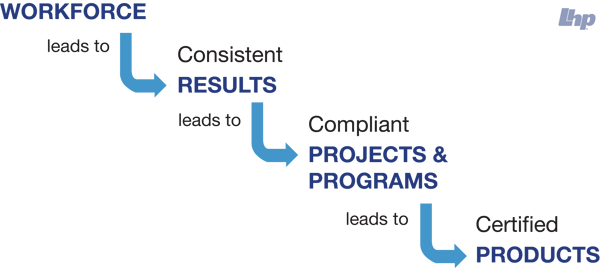
Figure 5: ISO 26262 Workflow Benefit
For the last step in Figure 5, ‘certified products’ is not necessarily a requirement, unless the customer would mandate it. However, the marketability for both a certified process and certified products could be a gold mine for your sales leaders. If you are unclear as to the difference between a ISO 26262 compliant product versus a certified one, read this blog post for clarification.

If you purchase prebuilt (Automotive) Safety Integrity Level – ISO 26262/IEC 61508 or other – packages, what kind of guarantees do you need from the...
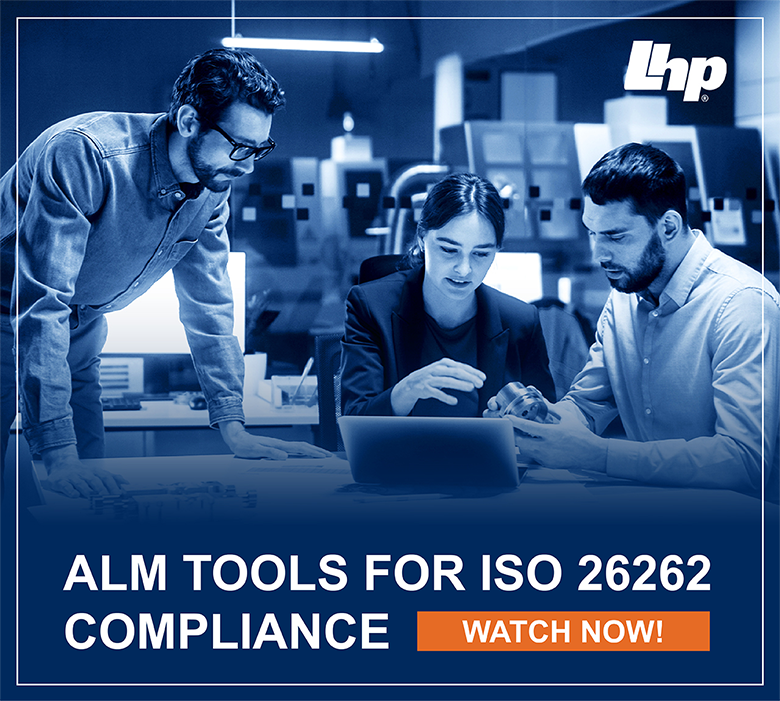
-An Interview with Adam Saenz and Nathan Haynes From LHP Engineering Solutions
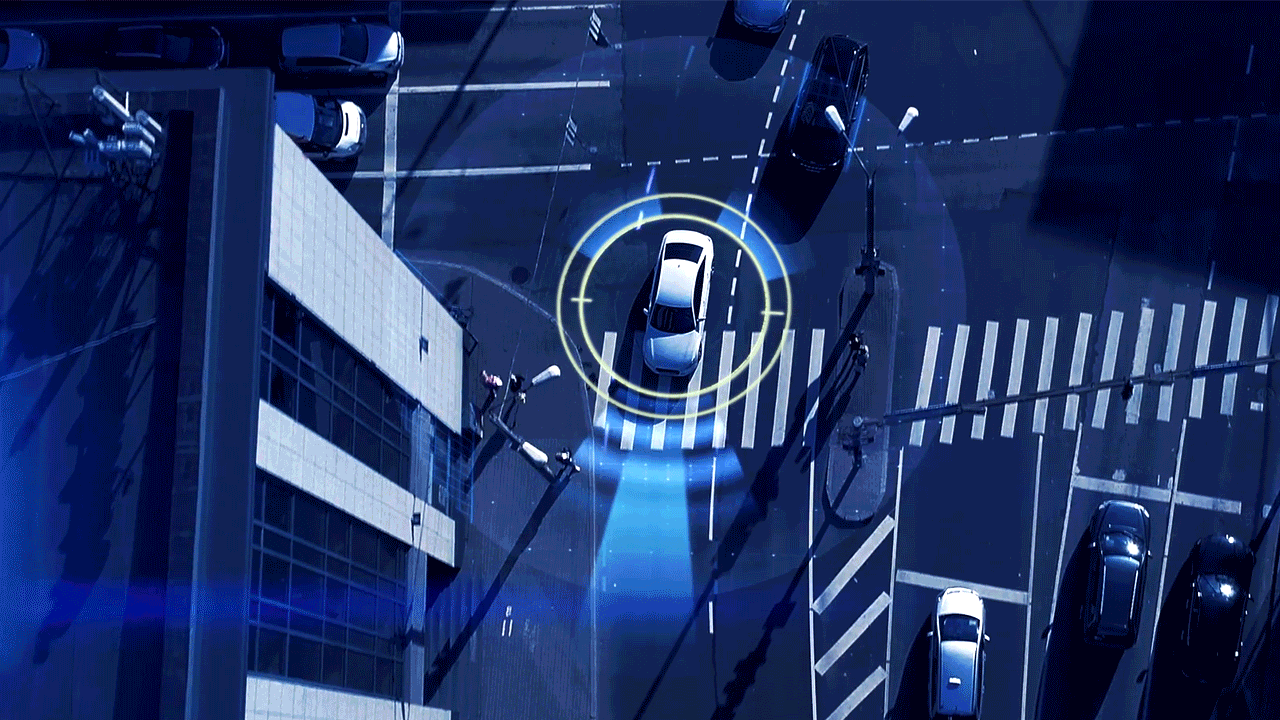
The question: When looking at functional safety, what is the difference between being ISO 26262 compliant and being ISO 26262 certified?